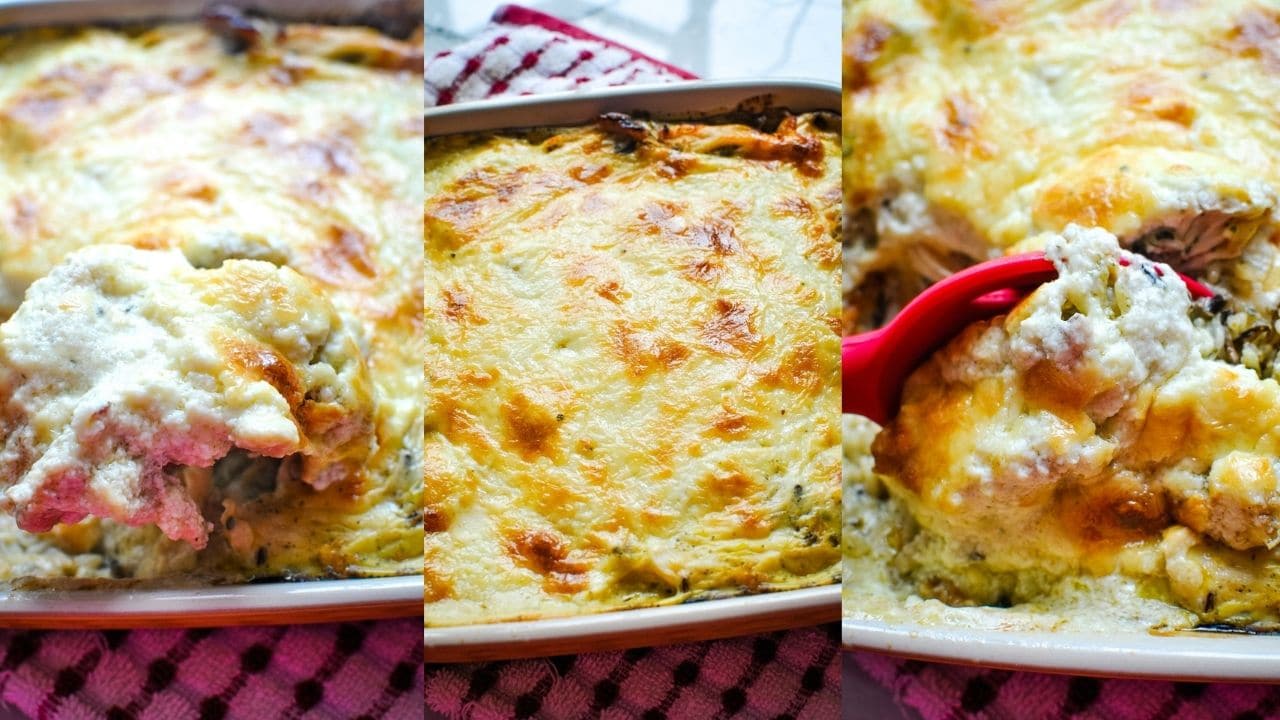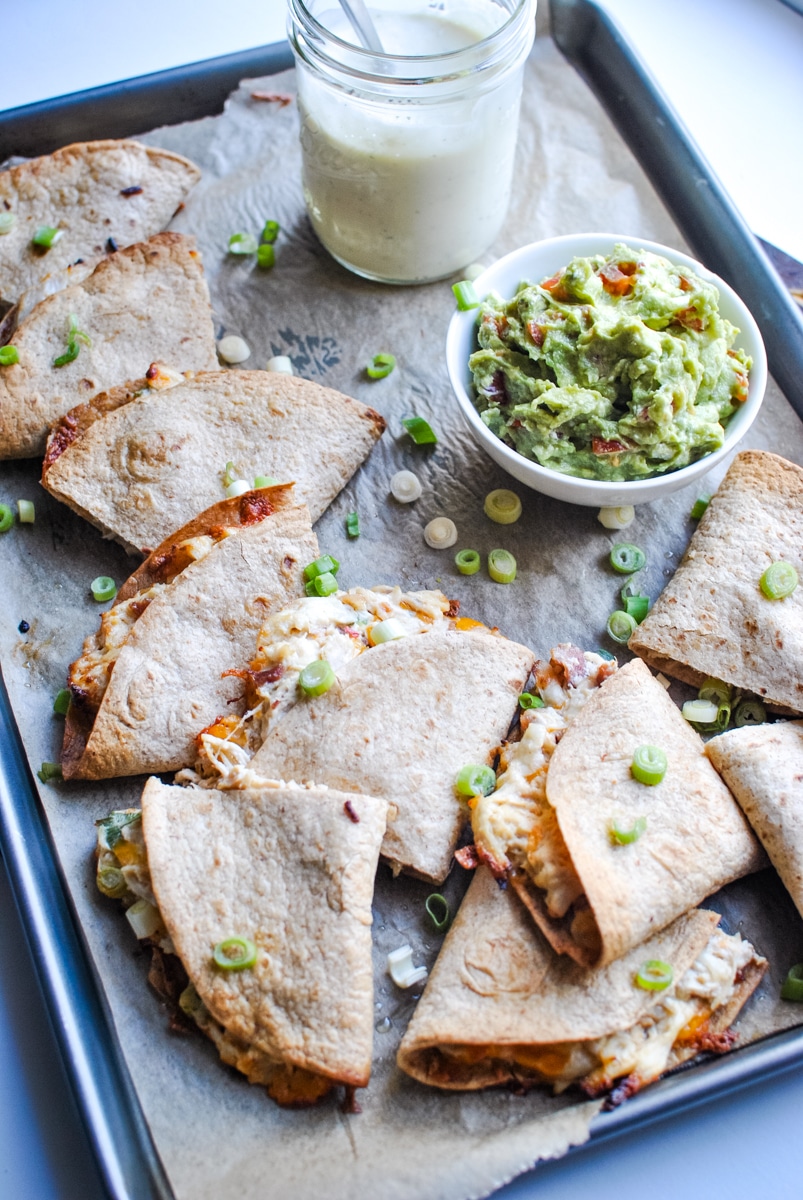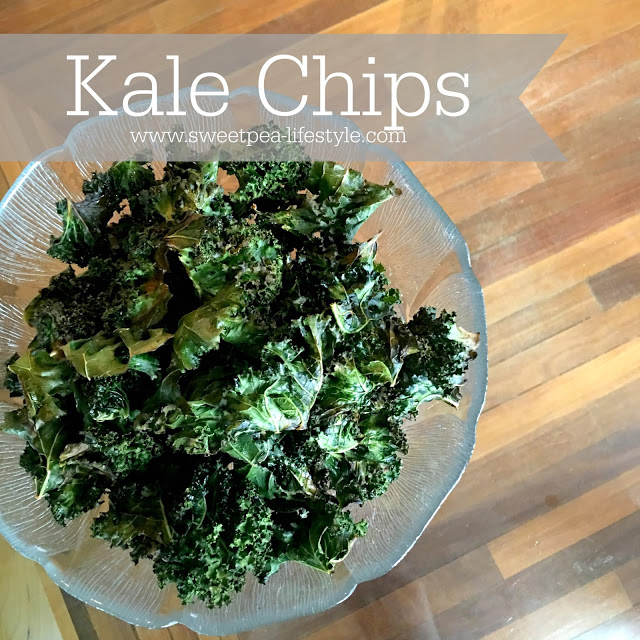How to Cook a Thick Steak to Perfection (Oven & Grill)
How to cook a thick steak is essential, known as a home cook. Learn how to cook your steak to the perfect temperature every single time!
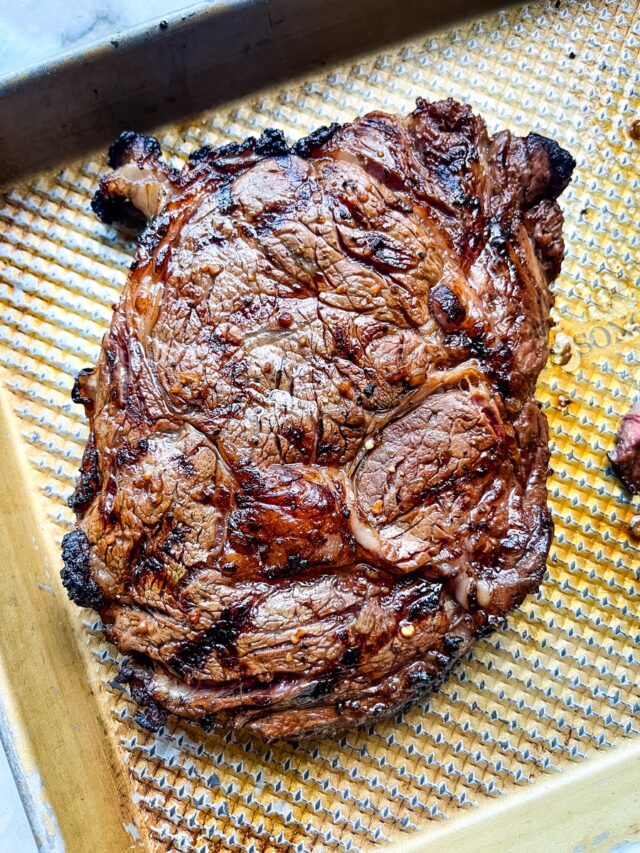
Introduction to Cooking Thick Steaks
Let me share a little secret about mastering the art of cooking the perfect 1.5-inch steak.
Grilling isn’t just about throwing any thick piece of meat on a hot grill. It’s like an art where you must be careful and know a few things.
You have to understand how thick the meat is, use really hot heat to make a nice crust on the outside, and cook it for just the right amount of time so it’s cooked perfectly inside, whether you like it a little pink in the middle or all the way cooked through.
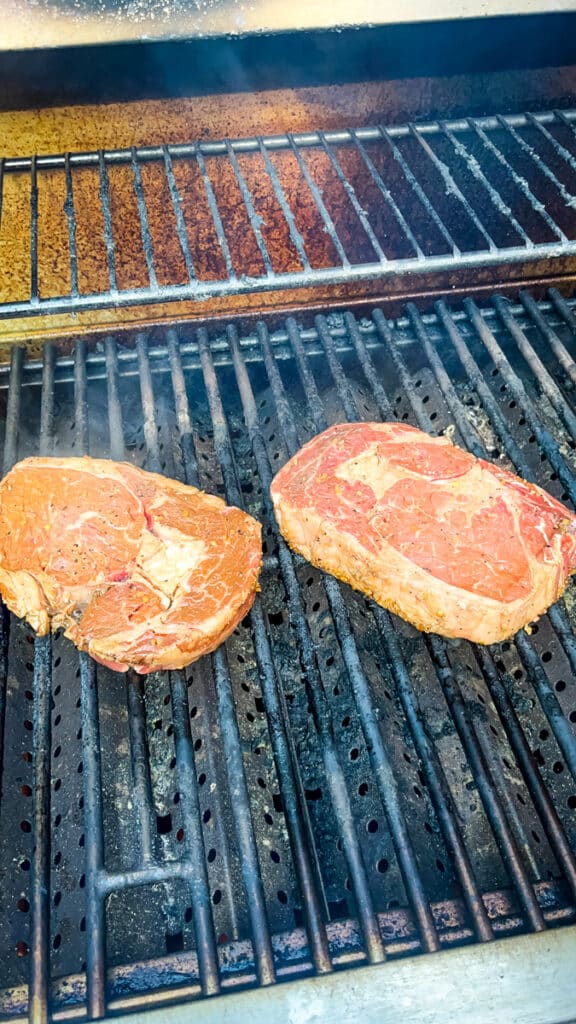
Using a meat thermometer isn’t just a good idea; it’s a necessity to avoid the tragic fate of an overcooked or undercooked steak.
And let me tell you, the difference between a juicy steak and a disappointing dinner lies in the grasp of indirect and direct heat and the gentle dance of placing steaks on the grill at just the right moment.
Key Takeaways:
- Size Matters: Understanding the 1.5-inch steak’s thickness is critical to achieving perfect doneness.
- Heat is Key: Mastering direct and indirect heat ensures a juicy steak with a nice crust.
- Timing is Everything: Using a meat thermometer helps to cook the steak to the preferred level of doneness.
Preparing Your Steak for the Oven
Before we dive into the oven phase, let’s prep our thick, juicy steak for success.
First off, it’s crucial to let our steak come to room temperature.
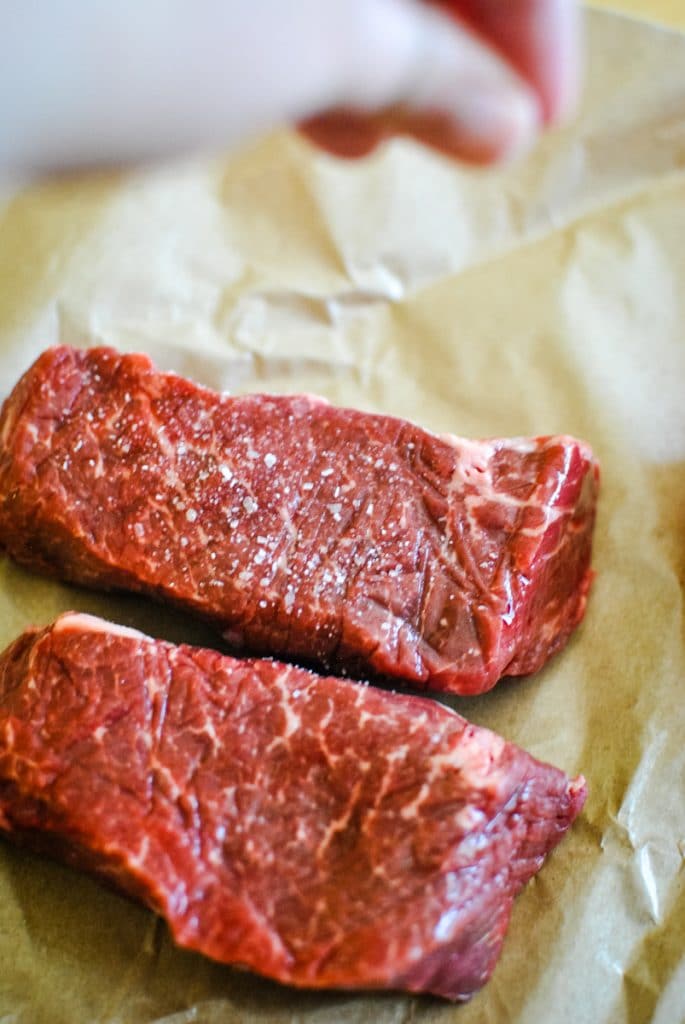
You might be wondering why.
Well, starting at room temperature ensures that our steak cooks evenly, giving us the perfect medium-rare steak. If they’ve been marinating, this is a great time to get the steaks out of the marinade and onto some paper towels. Cover lightly with either plastic wrap or another paper towel.
Next, we pat our steak down well with a paper towel. A dry steak means a beautifully browned crust because moisture is the enemy of that sizzling sear we’re all after.
Now, for the seasoning, if you haven’t marinated your steak—a generous sprinkle of kosher salt and a dash of black pepper. Don’t be shy here; this is what brings out the steak’s true flavor.
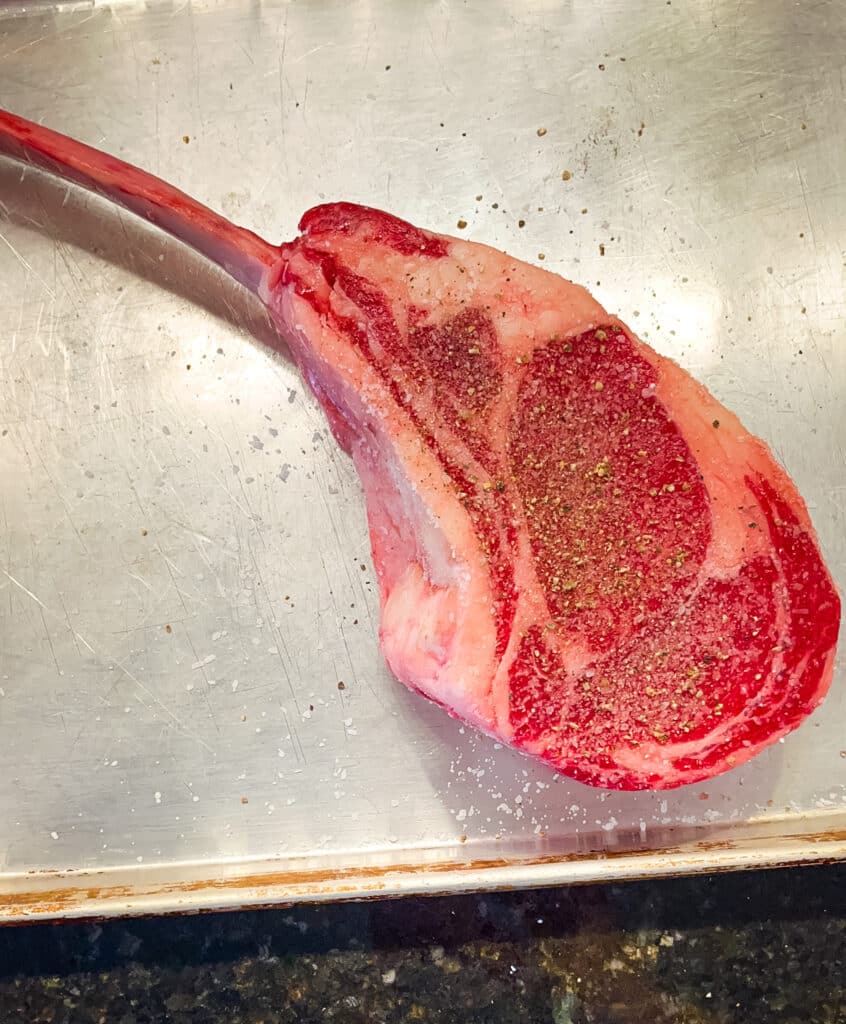
And here’s a little secret of mine—a light brush of olive oil over the steak before it hits the pan. Olive oil, apart from adding its subtle flavor, aids in creating that rich, golden crust that makes a steak not just good but great.
And who doesn’t want a great steak, right?
The Perfect Sear: Starting on High Heat
First, let me share a little secret about achieving that steakhouse quality at home—it’s all in the sear.
I grab my trusty cast iron skillet and get it screaming hot.
There’s something almost magical about the sound of a thick, room-temperature steak hitting that hot surface. Within moments, a beautiful, mouthwatering crust begins to form.
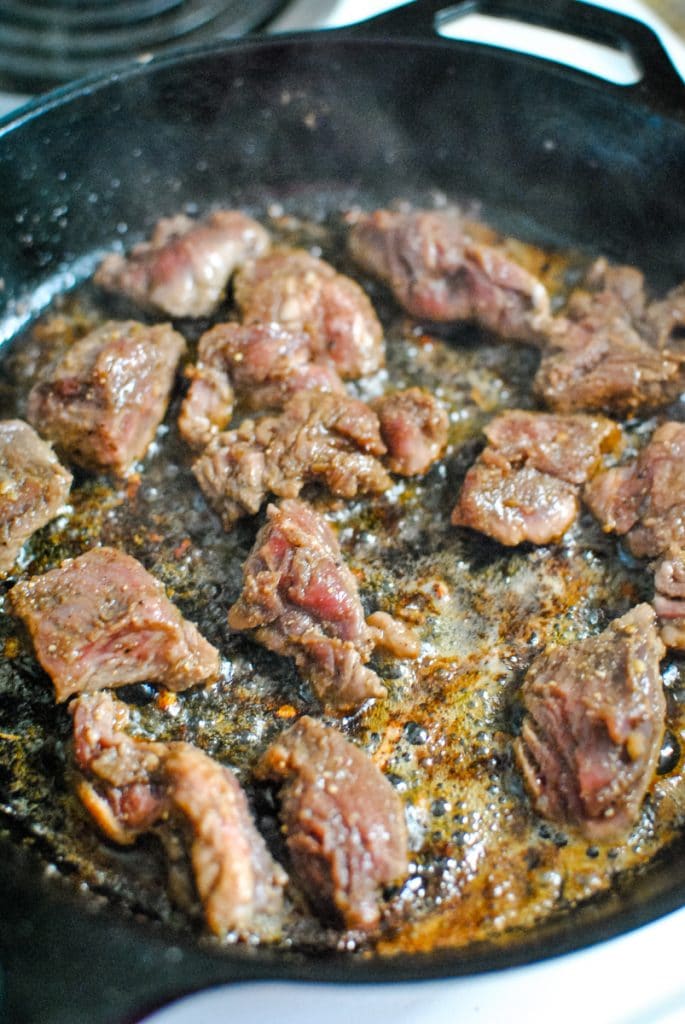
By searing the steak on high heat for just a couple of minutes on each side, we’re aiming for that visually stunning crust and locking in those precious juices, setting the stage for a steak that’s as juicy as it is flavorful.
This method, my friends, is the cornerstone of a perfectly cooked 1.5-inch steak, promising a feast for both the eyes and the palate.
Oven Time: Cooking to Perfection
Once you’ve given your 1.5-inch steak a good sear on both sides in the hot skillet, transfer it to the oven set at medium-high heat.
This is the best way to ensure that a thick cut of meat cooks through perfectly without sacrificing the tenderness of the meat or that nice crust we achieved on the cast iron. Keep an eye on it with a meat thermometer.
For a juicy medium-rare steak, I aim for an internal temperature of 130°F. However, the ideal temperature will vary depending on your desired doneness.
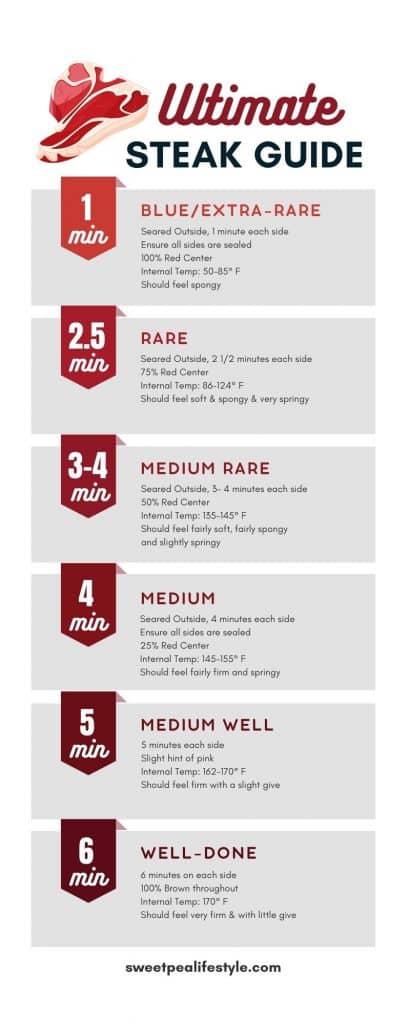
Every thick steak is unique, but with patience and attention, you’ll master this delicious steak in no time.
Letting It Rest: The Final Touch
Now, if there’s one thing that turns a good steak into a great steak, it’s giving it some time to rest.
Imagine you’ve just cooked your 1.5-inch steak to perfection, achieving that ideal level of doneness. You might be tempted to slice right into it but trust me, giving it a rest is a final touch this delicious steak needs.
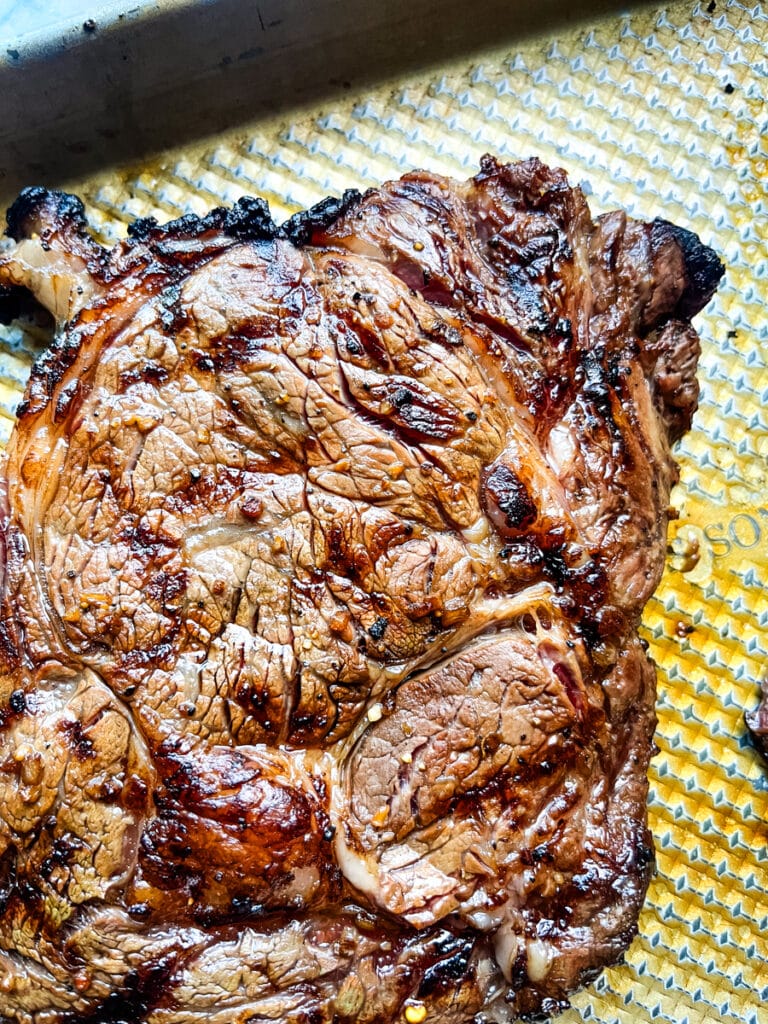
Pulling my steaks off the heat, I loosely cover them with foil and let them sit for a few minutes.
Letting the steak rest allows the juices to redistribute throughout the meat, ensuring every bite is as juicy and flavorful as the first.
Top Tips for an Exquisite Steak
Here are my top tips for cooking a steak in a cast-iron skillet.
- Lots of Butter: I love finishing steak from the oven in the skillet with lots of butter, a couple of garlic cloves, and fresh herbs. Basting the steak for 60 seconds on each side helps pack in even more flavor!
- Selecting the Right Cut of Meat: Next, the cut of meat is pivotal. I’ve learned that thicker steaks like a thick ribeye or a New York strip handle the high heat and indirect heat method wonderfully, developing that sought-after crust while keeping the inside tender.
- Understanding Cooking Surfaces and Methods: Lastly, the surface you cook on matters immensely. Whether powered by gas or charcoal, a cast-iron skillet or a hot grill provides the high heat necessary for a great sear. However, alternating between direct and indirect heat lets you control the cooking pace, ensuring that even the thickest cuts reach your desired internal temperature without the exterior becoming overdone.
Arming yourself with these insights, you’re well on your way to mastering the perfect steak, making every bite a testament to your culinary prowess.
Now, let’s discuss mastering the 1.5-inch Steak: Grill Like a Pro!
During the warmer months, I know I prefer a grilled steak!
Here are my go-to tips for grilling a thick steak.

Prepping Your Steak and Grill
First, let’s gather around the grill, and let me share a secret about prepping your steak and grill for that perfect sear.
Bringing your steak to room temperature is like letting it stretch before a big race; it ensures that it cooks evenly once it hits the hot grill, creating coveted grill marks that scream steakhouse quality.
And speaking of a hot grill, preheating it to just the right temperature, be it on a gas grill or a charcoal one, is like setting the stage for an award-winning performance. When I’m using a gas grill, I’ll turn the grill on and set a timer for 15 minutes so I know the grill is fully preheated.
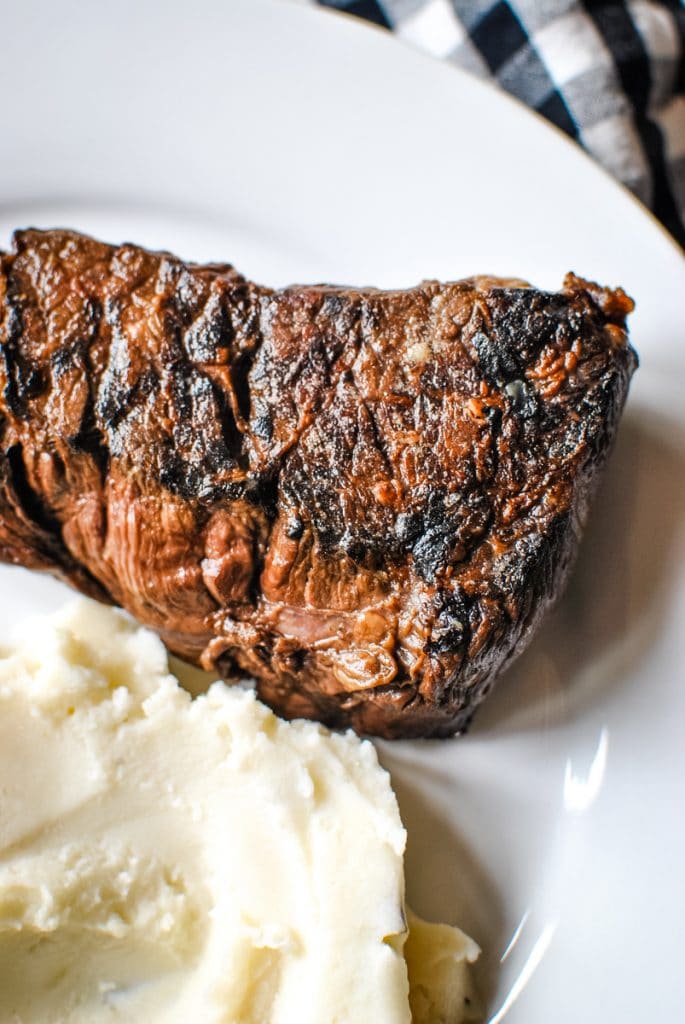
These simple steps elevate our at-home steak experience, bringing us closer to the best steak we’ve ever had.
Key Takeaways:
- Room temperature steak: Essential for even cooking and achieving the best results.
- Preheated grill: Sets the stage for perfect sear and grill marks.
- Steakhouse quality: Achievable at home with the right preparation.
The Art of Grilling a 1.5-Inch Steak
Grilling the perfect 1.5-inch steak on a sizzling hot grill is an art I’ve come to master. I watched my darling grandfather grill many steaks, and I picked up a few things!
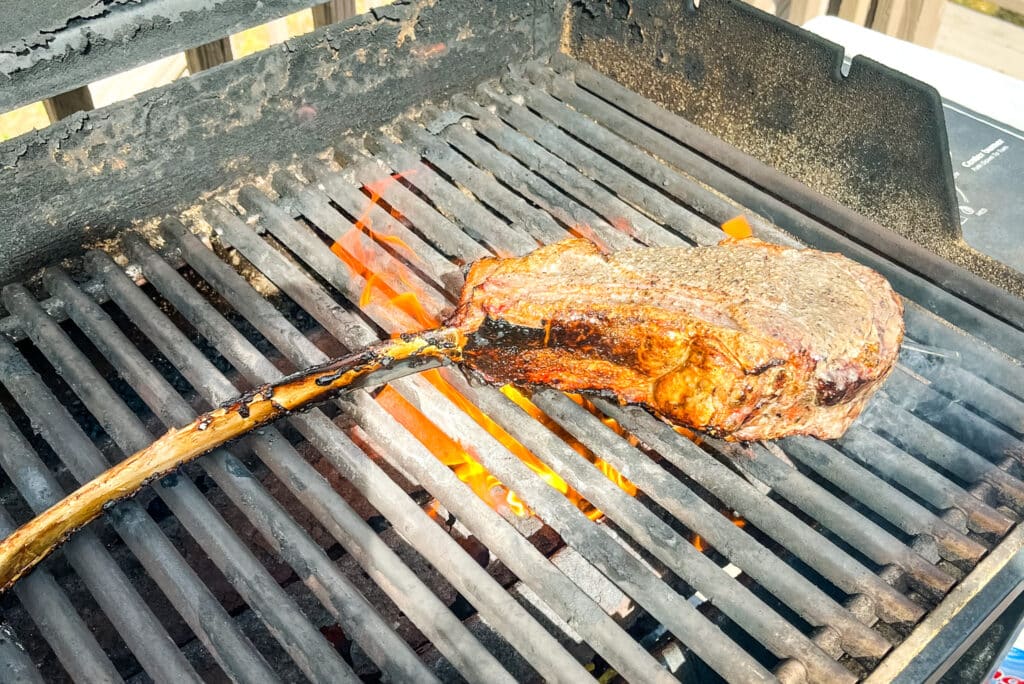
When it comes to thick 1.5-inch steaks, you’ll want to use direct and indirect heat on your grill. This means leaving one section of the grill off, as the heat from the other burners will be plenty.
I start by searing each side of the steak, aiming for those desirable, steakhouse-quality grill marks – a sign of a job well done.
To get those coveted grill marks, place your steak on your hot grill at 2 pm on a clock. Leave the grill door open, and set a timer for 3 minutes (for a 1.5-inch steak). After 3 minutes, turn the steak a quarter turn so it’s facing 10 pm on the “clock,” and cook with the grill open for another 3 minutes.
This handy chart helps you know the best temperature to cook your steak.
Choosing the Right Seasoning
Sea salt, pepper, and garlic powder can truly elevate the flavor profile of your steak. I’ve found that for the best results, seasoning right before it hits the grill works wonders.
This simple trio compliments the natural flavors of the meat without overpowering it, ensuring every bite is as savory as it should be.
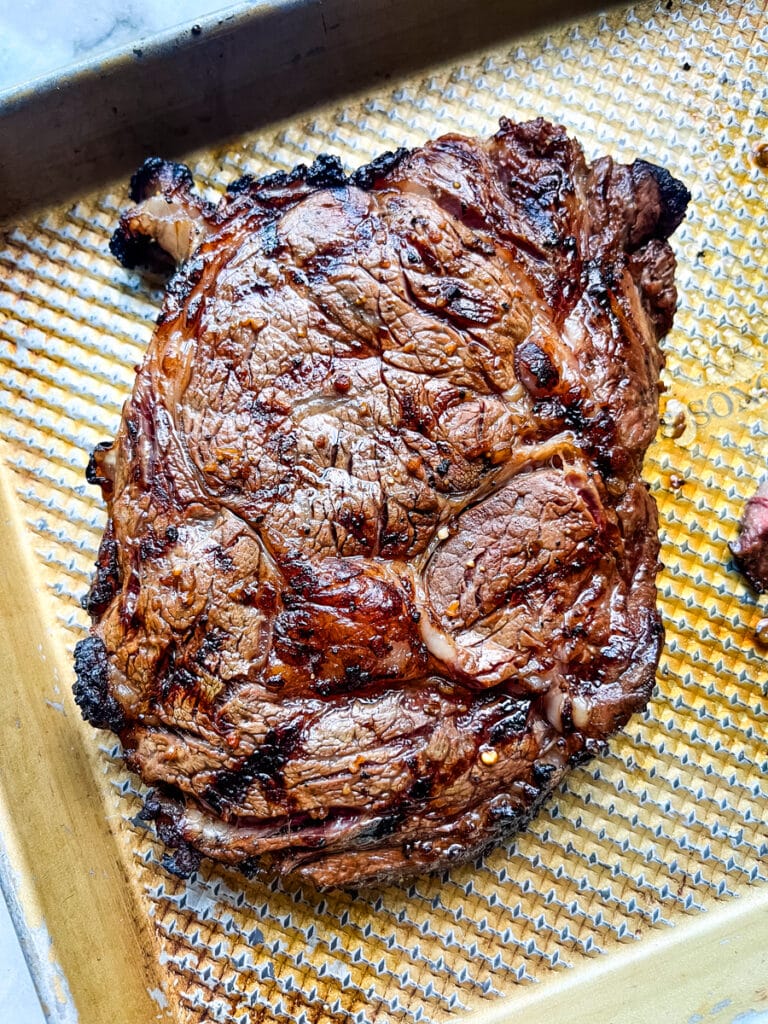
Of course, my favorite steak recipe is Papa’s Perfectly Grilled Ribeye. That marinade is so good!
Grilling on Different Types of Grills
Choosing between a gas grill and a charcoal grill can make all the difference.
With its easy temperature control, a gas grill makes achieving medium-high heat for the best steak with enviable grill marks a manageable task. Yet, the convenience of a gas grill doesn’t quite capture the smoky essence that a charcoal grill offers, enveloping each bite of the steak with that unmistakable charred flavor.
The charcoal grill demands more finesse, and careful attention is needed to distribute the heat evenly.
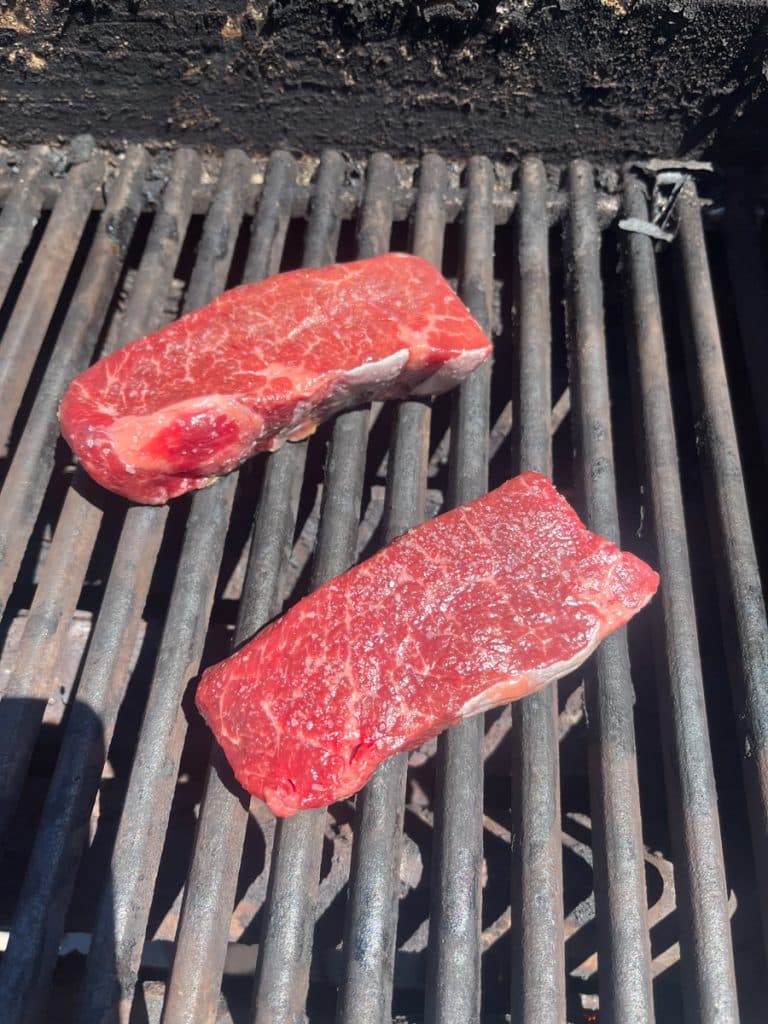
Whether it’s the steady flame of a gas grill or the vibrant heat of charcoal, the journey to a succulent medium steak, rich with grill marks and bursting with flavor, promises a gratifying end.
Regardless of your method, allowing your steak to rest will ensure the juices redistribute, making every mouthful worth the wait.
The Steak Rest: Why Patience Pays Off
Letting your steak rest before slicing is essential for the juiciest, most flavorful bite, as it allows juices to redistribute.
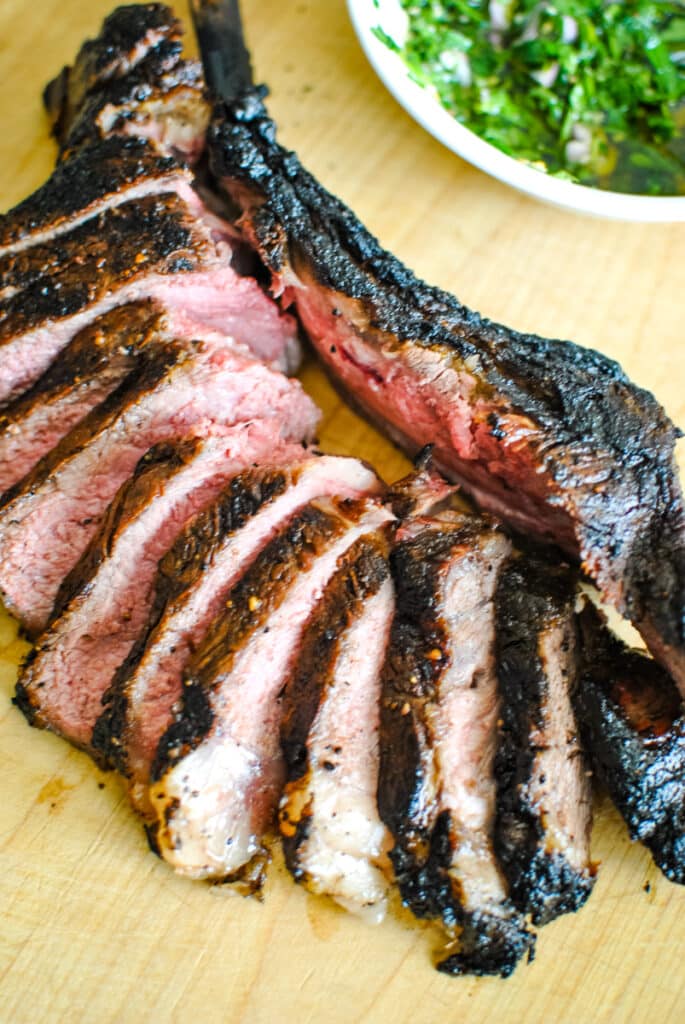
Cherishing the Ultimate Steak Experience
Indulge leisurely in every morsel, honoring the mastery behind your sublime, steakhouse-level creation right in your backyard.

